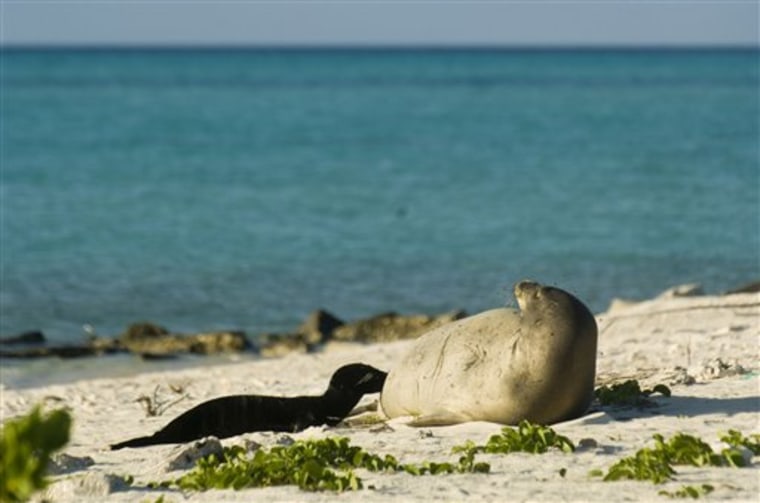Young female Hawaiian monk seals will be raised in captivity as part of a new plan to save their diminishing population from extinction.
The federal recovery plan will nab about 50 malnourished young seals each year, put them in protective custody to help them survive their early years, and then release them back into the ocean to start new families.
Scientists estimate there are only about 1,200 Hawaiian monk seals left, and their population has been shrinking by 4 percent per year. At this rate, there will be fewer than 1,000 of the seals left within five years.
"The young just aren't surviving," said Tracy Wurth, the main Hawaiian monk seal sighting coordinator. "If we give them a head start, they might have that extra oomph to make it."
This plan is a departure from previous efforts to save the monk seals because it emphasizes breeding instead of protection from predators like sharks, said William Hogarth, assistant administrator for the National Oceanic and Atmospheric Administration's Fisheries Service.
"What we've been doing has not been working, and now we need to focus on reproduction," Hogarth said at a ceremony Wednesday at the Waikiki Aquarium where he signed the recovery plan.
This is the first time changes have been made to the plan since it was drafted in 1983.
Few survive first year
The problem isn't that female monk seals aren't breeding, but that their offspring don't often live more than a couple of years, especially in the waters around the Northwestern Hawaiian Islands, a 100,000 square nautical mile national marine monument established last year, said Jason Baker, head of the monk seal population assessment program.
It's believed that juvenile monk seals have a hard time competing for food against other predators in the seas, Baker said.
"The young animals that are born now are not making it through their first year," Baker said. "For this plan to work in the long term, something has to change in the environment."
It will take more research to determine what food sources are lacking — fish, squid, octopus or crustaceans, he said. But the monk seal needs stepped-up efforts now to save the existing populations, and then environmental difficulties can be addressed later.
To start, the program will cost $1.8 million per year in federal money, which Hawaii Sen. Daniel Inouye said he would work to provide.
"Well-meaning citizens come up to me almost every day saying, 'Why spend money saving a seal? Don't we have enough?'" Inouye said at the aquarium. "I want my grandsons and ... granddaughters to see a monk seal — a live one, not a toy, not a poster."
Females near death will be caught
The recovery plan would capture female monk seal pups, possibly after they've had time to acquire basic ocean skills, said Sam Pooley, director of the Pacific Islands Fisheries Service Center.
Those taken in would be malnourished pups who were having a hard time fending for themselves in the wild, he said. After they're made healthy and grown to a size where they can compete for food on their own, they would be released.
"We only take into captivity those seals who we think will die anyway," Pooley said.
Monk seal populations near the main Hawaiian islands have sustained themselves better than in the open ocean in recent years, possibly because they face less competition for food from other species near land, Wurth said.
Listed as endangered under the Endangered Species Act, the seals are also threatened by entanglement in marine debris, natural predators, human interference and disease outbreaks.
